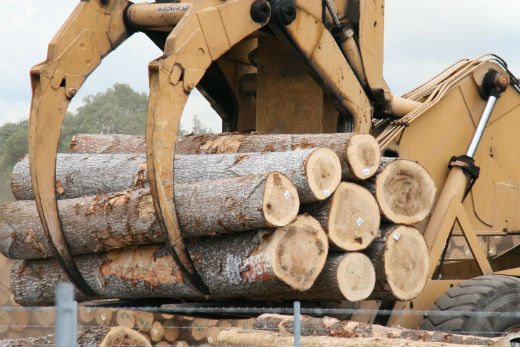Forestry exports are expected to remain stable at $6.4 billion for 2019 – and log prices are forecasted to stay at near-record levels as Chinese construction activity is thought to remain strong, according to the ‘September 2018 Situation and Outlook for Primary Industries’ report.
Released by the Ministry for Primary Industries last month, the report predicts forestry exports will only fall 0.3 per cent to $6.4 billion for the year ending June 2019.
“This decline reflects a drop in log prices, which is thought to be mainly be due to China’s lower purchasing power following their weakening currency.”
“Whether demand from China is also playing a role in prices is unclear. Port inventories in China have been relatively high since March 2018, although daily port off-take is still strong.
“The possibility of China placing tariffs on US forestry products may also favour NZ log exports in the future.
“Despite this, there continues to be strong demand for logs in China, driven by high construction activity, and this is expected to offset most of the reduction in export value,” says the document.
The majority of New Zealand’s export logs are sent to China. The country currently sources nearly 20 per cent of its logs from NZ, a large increase from the three per cent NZ captured a decade ago.
But increasing log exports during the last few decades doesn’t appear to have impacted the quantity of logs used for domestic processing in NZ. And during the next several years, logs used for domestic production are expected to increase relatively little, compared with high variation expected in export logs.
Meanwhile, the report says harvest volumes are expected to remain high with the maturing of forest plantings established in the 1990s, although production is unlikely to extend past current levels due to labour constraints.
And the proportion of wood supply coming from small foresters will increase during the next harvest cycle due to the 1992-2002 new planting ‘spike’ by small forest owners. These owners tend to be more price-sensitive than larger forestry owners, so future harvest volumes are likely to correlate with log prices.
Sawn timber production in NZ is expected to continue to slowly increase alongside domestic construction, with 10 per cent more building consents issued in the year ended July 2018 than the previous year. A high proportion of these consents were for homes in Auckland and Wellington.
“In the long-term it is expected there will also be increased demand for sawn timber overseas, with house starts for the US forecasted to increase during the next few years, and China real estate construction still climbing.
“In the short term, however, both the volume and price of sawn timber exports to the US may be reduced due to labour constraints in their construction industry, causing June/July house starts in the US to dip below 2017 levels, as well as mortgage rates that have not been this high since 2011.
“Therefore, we may not see the full impact of increasing US demand on our sawn timber exports until 2020.”
The report says China remains our biggest export partner for sawn timber. “Strong construction activity in China and Australia is likely to offset labour constraints in the US construction industry, leading to stable sawn timber export activity in 2019. Longer term, sawn timber exports are forecast to increase.”



0 Comments
Leave a Comment